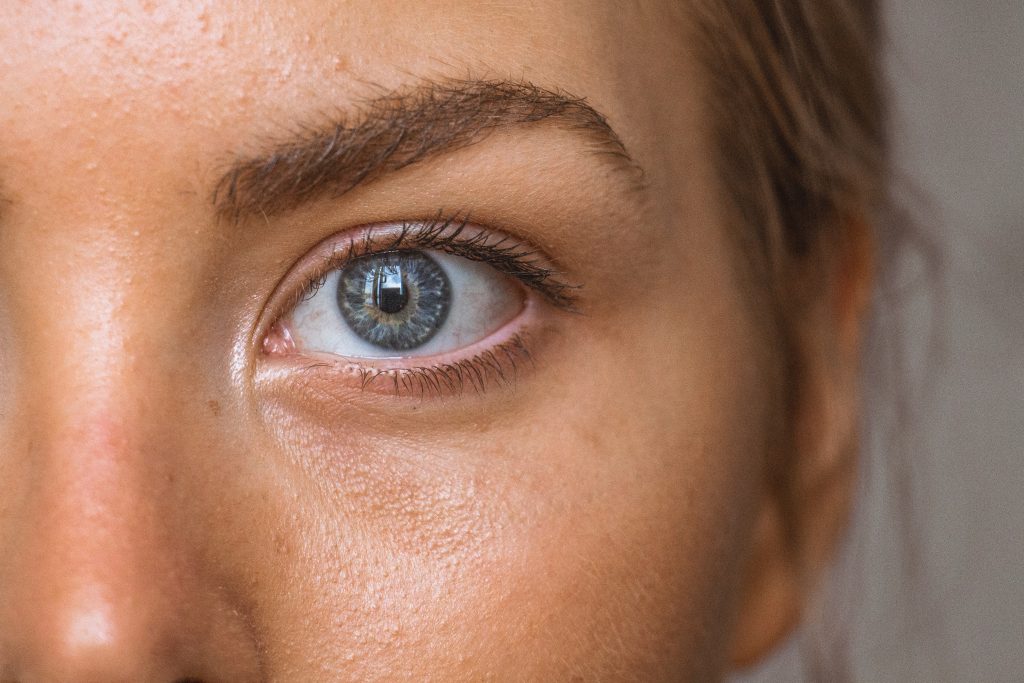Deep Tear Troughs
Shadows under your eyes can make you look tired. If people ask you or if you feel you look tired, then this might be one of the reasons. In young people the transition between lower eyelid and cheek is imperceptible. Developed under eye groove is an early sign of ageing around the eyes, displaying a fatigued and aged appearance to the face. The area corresponds to the youthful invisible transition between very thin lower eyelid skin and thicker cheek. The dividing line between these areas in older individuals is the eyelid-cheek junction. It forms a crease also called the nasojugal groove (term first used in 1961) or tear trough (term first used in 1969).
Tear Trough Anatomy
Tear trough is an anatomical area located right under your eye. This area supports the eye muscle and fat and serves as a transition zone between eye and a cheek. When this area loses volume through ageing, shadow changes on your face and creates an appearance of dark eye bags or circles.
As part of the ageing process ligaments that fix facial skin to the underlying facial bones thin and lengthen or stretch, facial bones recede back and facial fat shrinks. This results in the drooping of facial skin and appearance of laugh lines, jowls, nasojugal creases, eyelid bags etc. As we age, the skin within the tear trough becomes thinner and/or darker in colour than the slightly lower nose or cheek skin. It can also seem deeper or be more visible if there is protrusion of fat into the lower eyelid. The ageing process starts near the nose as the tear trough and progresses outwardly towards the same side ear becoming what is called the Tear Trough Line.

Treatment Consideration
At Castleknock Cosmetic Clinic Dublin, Dr Hazem Kahlout treats the delicate tear trough in a number of ways. Surrounding cheek tissue can be lifted up with the aid of sutures performed during a mini lift procedure. In other circumstances material like autologous fat or synthetic dermal fillers can be injected or placed right into the crease line to correct it. Least desired option is placing an implant to replace the receded inferior orbital bone.
The tear trough area is difficult to treat because the soft tissue between the edge of bone and outer skin surface is so thin. Actually its the thinnest skin in the body. Because most of this soft tissue is in fact muscle with little fat or skin, there is a tendency for non specialised dermal fillers (regular Restylane, Juvederm or Teosyal) injected into this area to form visible lumps or nodules. Another common side effect is a condition called tyndall effect where clear filler become visible through the skin. Muscle movement also tends to make the injected material gather into lumps. The thin skin is challenging to deal with. The suitable area for safe injection is very small. It needs delicate touch and knowledge of tissue separation. Dr Hazem Kahlout advocates placing homogeneous fillers like Restylane Skinbooster, Juvederm Volbella or Belotero Soft right under the dermis. He usually places stronger more G-Prime filler on the edge of bone under with the thought of augmenting deeper tissue to support lost or receded bone structure.
Tear Trough Treatment
Injection works best for patients with thick, smooth skin, and a well-defined tear trough, without excessively protruding lower eyelid fat. Patients with extremely wrinkled skin and less of an actual indentation to fill do less well with injections. The larger the overhanging eyelid fat, the less improvement you will get from filler injection alone. The older and more crepe-like the skin, the less well the injection works.
In the tear trough, hyaluronic acid like Restylane Skinbooster or Teosyal Redensity II lasts for up to year. Variable amounts are injected at a time and into or beneath the muscle. Then massage is used to even it out and prevent lumps but over massage can displace the filler. Dr Hazem Kahlout prefers using a soft blunt tipped needle knows as cannula to avoid piercing any blood vessels under the skin.
Dermal Fillers
This seems excessive given the results that are currently achievable by injection as described above.
At Castleknock Cosmetic Clinic Dublin we prefers to use quality homogeneous fillers only. If a negative vector is present, that’s to say if a perpendicular line drawn from the cornea drops down in front of the cheek tissue, a negative vector is said to be present. In such cases the use of high G-Prime dermal filler like Restylane Volyme, Juvederm Voluma or Radiesse can convert the patient gaunt look to a positive vector. By doing that we significantly add to a youthful complexion for an end result. The presence of a negative vector in and of itself also makes the tear trough more visible over time.
Nano Fat
In some patients lipofilling (which is using your own fat transferred harvested from another area of your body) is the preferred approach. That harvested fat is broken down to small stemcell rich size called nano fat. A Nano fat graft gives virtually permanent results with no risk of rejection or allergies and a natural camouflaging of dark circles, but it cannot be performed on every patient.
In older patients with hollowed out eyes that are undergoing a facelift Dr Kahlout prefer to augment the superficial cheek fat (SOOF) and place that is a graft over the edge of the bone. That gives much the same result as the filler injection with almost no risk of lumps or unevenness and the added advantage of being permanent.
PRICE GUIDE
When getting aesthetic injection treatments you’re paying for the service, skill and expertise rather than just the product. Treatment cost depends on the the type and on the amount of dermal filler required. For price guide click this link to see our current Tear Trough Price Guide.








5 Comments
Comments are closed.